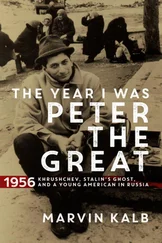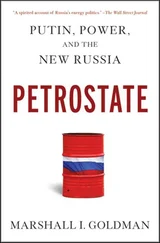“I’m not a follower; sometimes it’s all too much for me and I feel as if my head is going to explode if I don’t leave immediately,” she replies. Maybe she would have dropped her quest long ago were it not for the strange coincidences. For example, her last visit to Sun City a year ago: “On that particular day it was all too much. I was longing to speak to someone who was also having doubts, but there was no one. It’s like a bubble here—hardly any other opinions penetrate it.”
She began to let her imagination flow: if Vissarion really was who he claimed to be, he should give her a sign; otherwise she would leave the next day and return to her life, back in the “world.” At first nothing happened. “A couple of minutes later I looked at my cell phone because I wanted to know the time. The display showed that there was a new message, which in itself is odd as we very rarely have reception here. The message read, and this is no joke: Hello, it’s me, Jesus .” The message continued with sentences like: “If you disown me, I will disown you. If you accept me into your heart, I will be with you every day.” The sender was a friend from Bremen who had herself just received the Biblical message from somebody else. “She told me later that she’d simply had a feeling that it would be good to send me that message.”
Minna is receptive to symbols. Recently, when she was once again beset by doubts, a friend changed her two Facebook profile photos. The new main photo showed Lenin’s hometown, Ulyanovsk; the smaller photo next to it was of Noah’s ark. “I immediately understood the connection—Vissarion lived for a long time in Ulyanovsk and, by the way, considers Lenin to be the Antichrist. And the ark, of course, represents this place here.”
Many of the followers speak of a kind of awakening. Some talk of just a “feeling of warmth” when they first arrived at Sun City. One woman told Minna that suddenly everything went black and she saw herself in Israel two thousand years ago. A man hiking in the snow in January claims to have heard an angel singing. “You could dismiss it as hogwash and craziness,” says Minna. “But what I can’t let go of is the thought that, supposing Jesus really came back to Earth, wouldn’t it happen exactly as it’s happening here?”
Only two cars pass us on the whole stretch, both fully laden. After some four hours we reach a wooden hut with glass windows that looks like a ticket booth. A man with long hair and a full beard sits inside the booth; he asks us who we are and whether we know the rules. On affirming, our names are handwritten onto a list; we walk a few yards further and are at the gate to Sun City. It consists of four wooden columns with a mobile of colored stones hanging in the middle and two mounted panels with aphorisms: You shouldn’t think about the support that you need, but who you can support and Not everyone who takes a step goes forward. Not everyone who stands still is without movement .
I walk through the gate and try to feel something. No holy shakes, no singing angels. But the place does have a special aura through its spectacular setting. It has neat paths and gardens and dozens of wooden houses with pointed gables; the prettiest have roofs like magicians’ hats and elaborately painted window shutters. The border to the east is a forested hill rising a few hundred meters above the settlement. If this really were the modern ark, the only thing remaining after the Apocalypse, then at least a really beautiful patch of the Earth would have been preserved.
A straight path leads to the gathering place where, on neatly trimmed grass, there is a roughly ten-foot-high beige sculpture: two angels back to back, above them a Vissarion cross inside a circle, and then a globe topped by a sun with fourteen rays.
Two men in white linen pants and white ponchos sit on a bench. “Don’t walk over that area,” warns Minna. “You’re only supposed to do that when praying.” One of the men greets us and Minna tells him we want to attend the service. He offers to accompany us there.
His name is Sasha, he has a full beard and noticeably strong hands—in the “world” he worked as a physiotherapist. He has lived in the region for thirteen years, seven of them in Sun City. Only people who are particularly devout qualify to live here. The whole time we speak he has a pinecone attached to his hand, which he twists and twirls like a rosary.

I ask him what he finds hardest about living here, expecting complaints about the brutally cold winters, the isolation from the outside world, or the mosquitoes and ticks. His answer surprises me: “For the mind, the closeness of the Teacher is the hardest thing,” he says. He is convinced that Vissarion can sense the vibes of his followers—the nearer they live to him, the more he senses. Every minor infringement of the rules, every impure thought causes strain, which, in turn, means negative energy that the Messiah apparently can feel.
We wind our way through the woods up the hill. Blueberries grow on the side of the path; sometimes we hear the clear chime of a bell. Roughly halfway up the path there is a wooden throne, and above it an open parasol. “This is where the Teacher answers questions after the service,” says Minna. I imagine that it’s something between the Sermon on the Mount and a call-in radio show.
A couple of hundred yards further on Sasha points to a simple wooden hut up in the woods. Every male member of the village retreats there twice a year for silent reflection, making wood carvings, and reading The Last Testament . For the entire three-day period there is a strict regimen of only seven hundred grams (about twenty-five ounces) of bread, plus tea, dried fruits, and onions.
Next to the path is a boulder that looks as if someone has scratched a cross on its surface. The followers consider it to be a sign of God. Sasha stops briefly and makes a sign of the cross in front of his chest—up, down, left, right, and then a circle as a symbol of the unity of the various religions.
The “Altar of the Earth” marks the highest point of a clearing. It consists of a wooden pavilion with various symbols of Christianity, Islam, Taoism, and Buddhism and a sculpture of dancing cherubs on the inside. The followers have gathered around it. The men are all wearing white linen clothing; the women are slightly more colorfully dressed, with long skirts and vests in pastel colors. Sasha points to a stone where we’re supposed to sit and indicates that we should be quiet. With our totally different clothing we stand out like turkeys in a swan colony, but we attract barely more attention than the cold Siberian woodland air.
A priest in a red mantle says a few words, then the followers begin chanting. It’s polyphonic and lofty, but also withdrawn, as if the participants were singing as softly as possible so as not to disturb the peace of Nature. For a moment I envision them standing right here singing their self-composed psalms while the rest of the world is being wiped out by volcanoes, earthquakes, and meteorites.
After the service, as the followers trudge gradually downhill, I ask Sasha why everyone wears white. “In earlier days the Teacher wore red; now he prefers white, which is why many followers believe it’s the right color,” he replies. On top of this, white represents purity and cleanliness.
After half an hour we reach the clearing with the throne. It is empty; today Vissarion doesn’t consider it necessary to come. More than a hundred followers walk down to the meeting point in the center of the settlement to continue singing in a circle.
Читать дальше
![Stephan Orth Behind Putin's Curtain: Friendships and Misadventures Inside Russia [aka Couchsurfing in Russia] обложка книги](/books/415210/stephan-orth-behind-putin-s-curtain-friendships-a-cover.webp)












